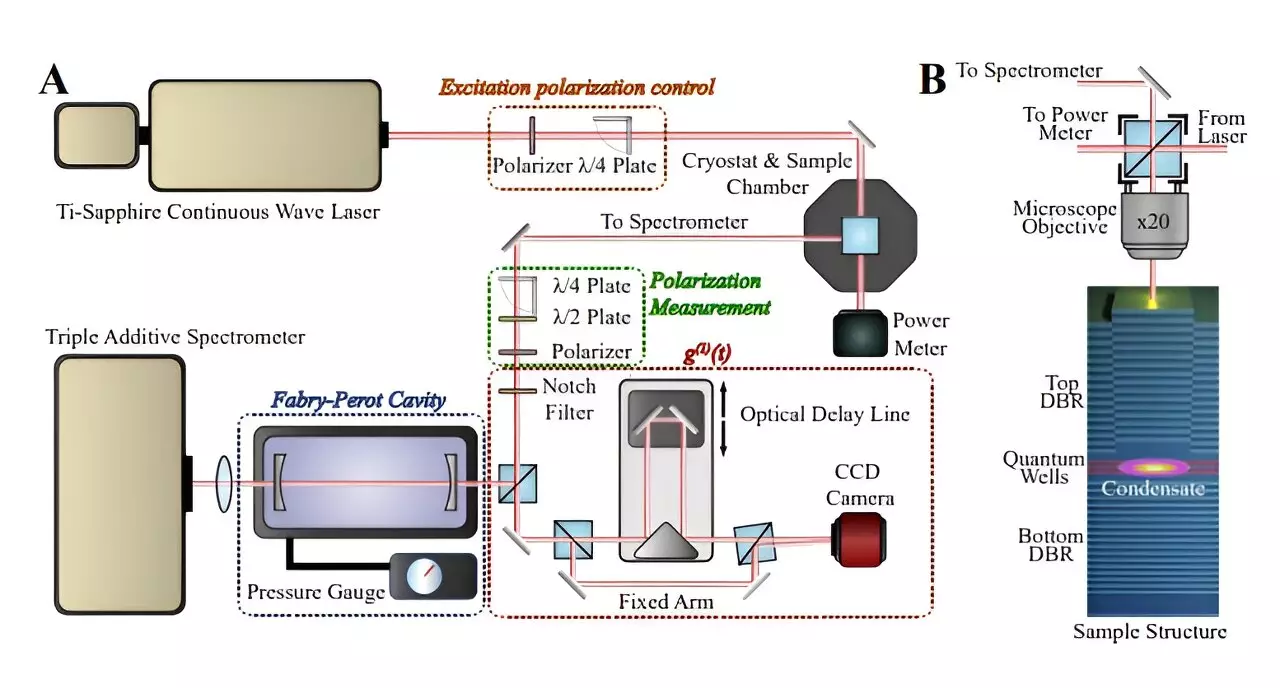A recent breakthrough in the field of quantum physics has led researchers to observe time crystals on a microscale semiconductor chip. This groundbreaking discovery unveiled exceptional high non-linear dynamics in the GHz range, marking a significant advancement in our understanding of time crystal behavior. The experiment, published in Science, was conducted by researchers from the Paul-Drude-Institute for Solid State Electronics (PDI) in Berlin, Germany, and the Centro Atómico Bariloche and Instituto Balseiro (CAB-IB) in Argentina.
The researchers used a high-quality semiconductor-based sample created at PDI, which served as a trap for coherent light-matter condensates. By directing a continuous laser at the sample, the team at CAB-IB observed that the particles within the sample began to oscillate at GHz frequencies, reaching up to several billion times per second. This observation marked the first time sustained oscillations in this range were observed in a condensate sample on a semiconductor device.
The ability to fine-tune these oscillations by adjusting the laser’s optical power opened up new possibilities for controlling frequency evolution. Furthermore, the researchers discovered that by increasing the laser power, the particles vibrated at exactly half the frequency of the mechanical vibrations in the semiconductor atomic lattice. This unique behavior showcases a new dimension in the physics of open many-body quantum systems, enabling frequencies several orders of magnitude higher than previously achieved.
The concept of time crystals, first proposed by Nobel Prize-winning physicist Frank Wilczek, has intrigued researchers for over a decade. Wilczek’s theory raised questions about periodic variations in time within quantum systems of many particles, sparking a quest to explore the conditions necessary for time crystal behavior to emerge. While past studies have shown that time crystal behavior cannot occur in isolated systems, the recent observation of time crystals in open systems has paved the way for new insights into their dynamics and potential applications.
The implications of this research extend beyond fundamental physics, opening up possibilities for utilizing time crystals in integrated and microwave photonics. The enhanced coupling between GHz phonons and near-infrared photons in semiconductor-based systems holds promise for applications in quantum conversion between microwave and optical frequencies. These findings could have significant implications for on-chip photonics and the development of advanced optoelectronic devices.
The observation of time crystals on a semiconductor platform represents a significant milestone in the field of quantum physics. This groundbreaking discovery not only sheds light on the complex dynamics of many-body quantum systems but also paves the way for innovative applications in integrated photonics and quantum information technologies. As researchers continue to explore the properties and behaviors of time crystals, we can expect further advancements in our understanding of quantum phenomena and their practical implications for future technologies.


Leave a Reply